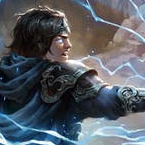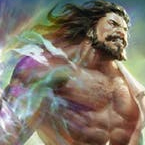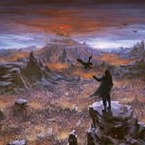Kano has always been a cheeky rogue pick that could easily snatch games from unprepared opponents, and as much as I have always been an advocate for his viability that is largely where he stayed.
That is, until Everfest.
Kano now has the tools to win any game, at any point in the game, instantly. What little representation Kano did get during ProQuest season definitely showed off his power, with one Kano player from the US making several top 8 placements and even taking out a whole event. I myself went 11-6 across 3 ProQuests, placing 11th at one event and barely missing Top 8 (at 9th) in the other two.
Admittedly, those are not phenomenal placings, especially considering the conversion rate of other decks currently floating around, but let's go deeper than the numbers to examine the games behind them:
- Viserai, dead before the third Tunic counter is even placed.
- Chane, killed before he even finished the first turn of the game.
- 28 damage dealt to Katsu in an unblockable chain that leaves you with an arsenal and Potions.
- ...games so wildly favored that they’re next-to-impossible to lose.
For the people unfamiliar with playing as or against Kano, this seems like witchcraft; but face down the ruthless, explosive efficiency of a full-powered Wizard and it will become all too real.
What Changed?
Kano already had the best damage output in the game even before Everfest- and arguably always has. Multiplicative damage is nothing to scoff at. Cards like Blazing Aether and Aether Flare have always been incredibly powerful, but this output simply erupted with one single inclusion: Aether Wildfire.
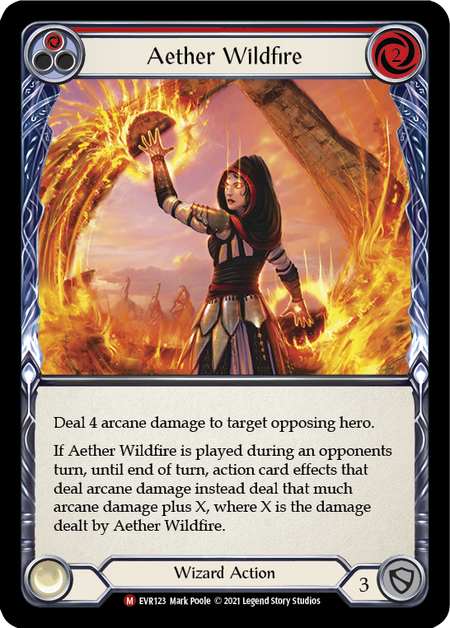
So long as it is played in an opponent’s turn, Aether Wildfire adds its own damage onto any other arcane damage that would be dealt this turn.
Initially I wasn’t sold on this card. It definitely had an incredible ceiling, but the cost of getting more out of it than, say, an Aether Flare seemed too high. I was woefully incorrect.
Previously, the max arcane damage that could be somewhat consistently dealt in one turn with Kano was a little north of 20, if it went unblocked. Now it is almost your opponent’s entire life total.
They. Are. Never. Safe.
To show just how easy it is to kill an opponent with Aether Wildfire, here's a simple 2-card combo.

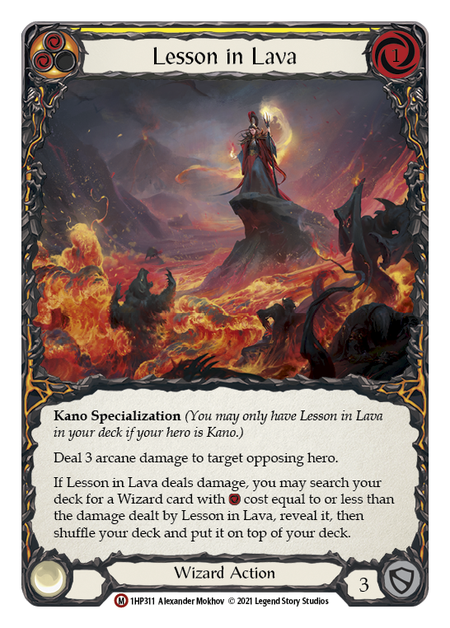
This requires Aether Wildfire, Lesson in Lava, a good number of resources, and two ways to play cards at instant speed (Storm Striders is an option of course, as is your hero ability in tandem with Ragamuffin’s Hat, Potion of Déjà Vu, or other top-decking trickery).
First, play Aether Wildfire at instant speed, buffed by Crucible of Aetherweave. Then, play Lesson in Lava at instant speed, searching for Blazing Aether. Play Blazing Aether at instant speed off of your hero ability. This alone deals 31 damage as a 2-card combo if unblocked, and it can be played entirely at instant speed after your opponent has run themselves out of resources. Every point of damage Aether Wildfire is dealing is effectively being multiplied by 5- and this is just one combo that can be done with the card!
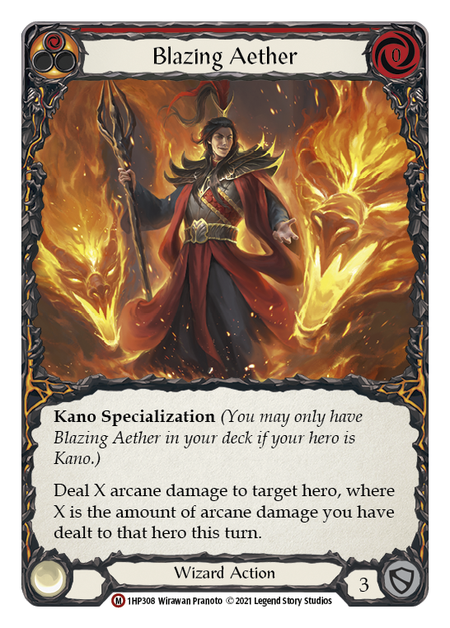
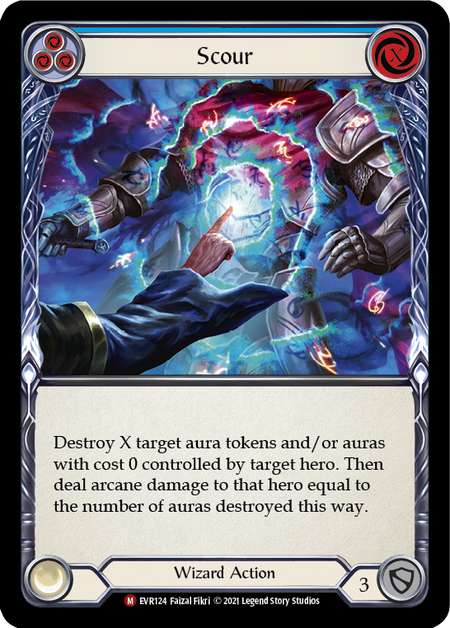
While a lot of Kano’s newfound strength comes from Aether Wildfire, it isn’t the only new toy in his kit. Scour has made his worst matchups winnable and the toss-up matchups landslide victories, destroying Spectral Shields, zero-cost auras, Soul Shackles, and Runechants alike. Sigil of Parapets has also seen some success as Kano’s best way to both attack and defend at the same time, sometimes getting up as high as 10 block for a 1-cost defense reaction.
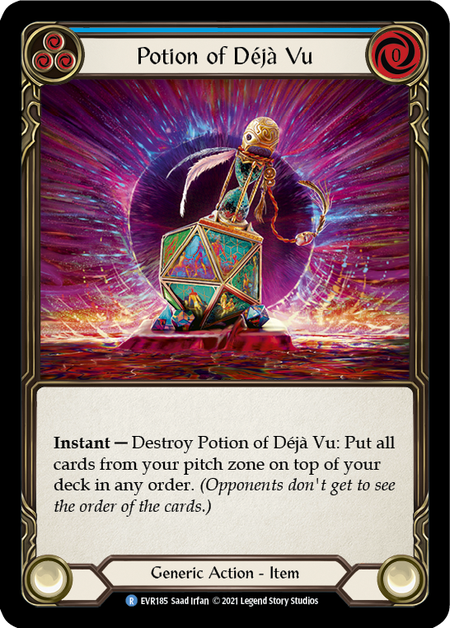
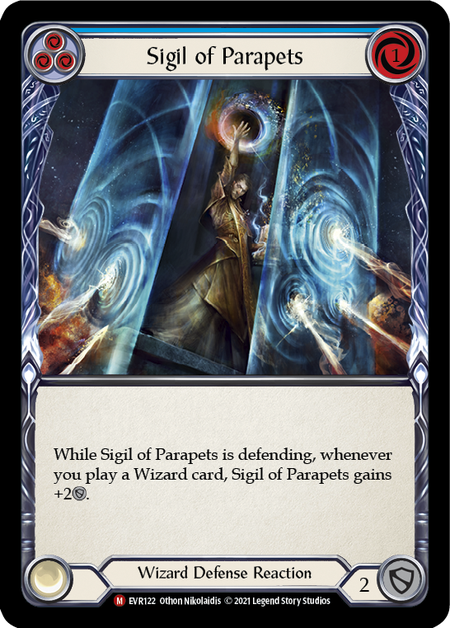
And the generic card Potion of Déjà Vu looks unassuming, but has some completely ridiculous applications in Kano. In all honesty, that card alone could warrant an entire article devoted to it, but in short you can pitch a power card and a blue to activate Kano, holding priority to use the Déjà Vu effect, putting the power card on top and generating resources equal to the pitch value of the card; then Kano resolves and you can play it as an instant. Think of it as another copy of Storm Striders with cost 3-X where X is the pitch value of the card you want to play.
One final but extremely impactful change that Kano has experienced is that there is no longer a need to run bad blue cards just to make up your ratios. Previously, decks were running blue Foreboding Bolt or Snapback- and while they had good synergy in theory, they always felt horrifically bad to hit blindly off the top. Most Kano players jumped at the opportunity to replace them with Scour, Emeritus Scolding, and Potion of Déjà Vu. Now, even if you low-roll and only hit blues when you go in blind, those blues can actually do something instead of ruining your day.
Playing Kano Style
Not a lot has changed since Everfest in terms of overall playstyle. The deck is still an aggro burn deck that easily dispatches any opponent who comes unprepared- but now almost every kill comes from Aether Wildfire, so you play your game with two things in mind.
1. How do I deal damage or take cards from my opponent this turn? This is simple: use Kano’s insanely threatening damage to rip cards from your opponent. Or just take an overwhelming chunk out of their life total, primarily playing in your turn so you can use your action point to its fullest, and so your opponents have a chance to drop cards in front of you. Cards like Sonic Boom, Aether Spindle, Lesson in Lava, Chain Lightning, and honestly almost every other card in your deck can be used to fill this role. Deal damage, get your opponent to block. If they do, you slow them down. If they don’t, you’re closer to winning.

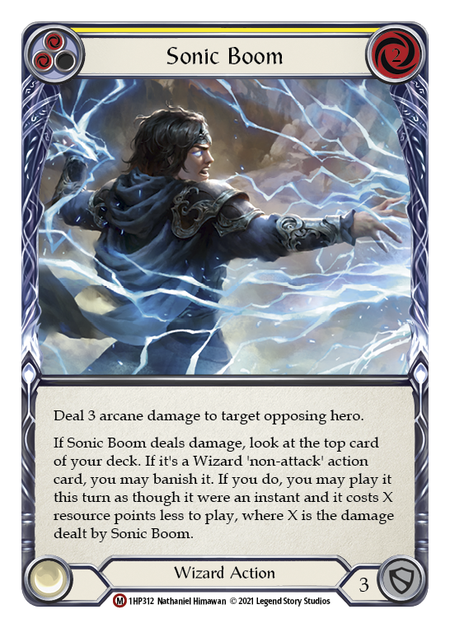
Pro Tip: Sometimes it can feel like you’re running against a wall into opponents with Arcane Barrier 3 who constantly pitch to stop your attacks, as almost no damage will leak through. But it’s important to never underestimate the value of tempo in Kano. Taking two cards out of your opponent’s hand during your turn is as good as taking three on any other hero, because your opponent needs to hold back their turn in order to keep resources in hand to block with. Because of this, they only have one card left to use. The damage will come, young apprentice; put your faith in the almighty Wizard.
2. Do everything in your power to get to Aether Wildfire. This includes dropping one into arsenal when you see it, drawing cards, or Opting cards to the bottom to cycle your deck faster so you have better odds of drawing one. Play potions such that when you do get one, you are freely able to use it; and line up synergistic cards such as Lesson in Lava, Snapback, or Blazing Aether, so whatever combo you find can be as explosive as possible.
There are a handful of things to consider when playing towards Wildfire, but I’ll go over the most common ways you can angle your play specifically to set it up.
If you draw Wildfire, what can you do with it right now? To answer this, we need to evaluate whether its effect is active, whether you afford it and enough follow-up, how much damage it's presenting, and whether your opponent can block it. At any given point in the game, any of these questions could have more weight than another; but as a general rule, if you can’t play it for maximum value, put it in arsenal- even if it means playing a poor turn to empty it first. Once Wildfire is available to you at all times, you’ll start to feel a lot more comfortable.
What if you don’t draw Wildfire? In my opinion, this is where a lot of the game-deciding choices happen, even if their impact feels subtle. There are 3 plans to enact in this situation. The first and most important is cycling– draw cards, opt cards you aren’t going to immediately use to the bottom, and banish dead cards to get deeper into your deck towards Wildfire. Cards like Tome of Aetherwind and Tome of Fyendal are key to this, as well as Aether Spindle as your premier Opt card. Every card you get rid of is one card closer to Wildfire and winning the game.
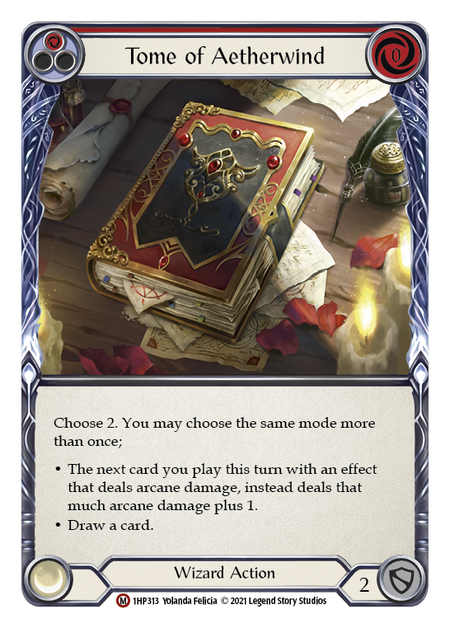

The second plan is setting up your board state. As with almost everything in Kano, the importance of this varies in every matchup and can change from turn to turn, but in the most general of terms your potions are your best friend. If you have a choice between playing a potion and playing a simple arcane attack- and you don’t have a Wildfire setup ready- play the potion nine times out of ten. Laying out Energy Potion smooths out your curve on your kill turn, playing Potion of Déjà Vu gives you the freedom to draw Wildfire into hand and pitch it to put on top of your deck (saving your Striders for a Lesson in Lava or Blazing Aether), and setting up Clarity Potion massively improves your consistency. Being conservative with Fyendal’s Spring Tunic and holding the last counter until the very end is also part of your board state setup. Remember: one resource converts into one damage with Metacarpus Nodes, and one damage on Aether Wildfire converts into five damage if you have Blazing Aether. The extra reach matters.
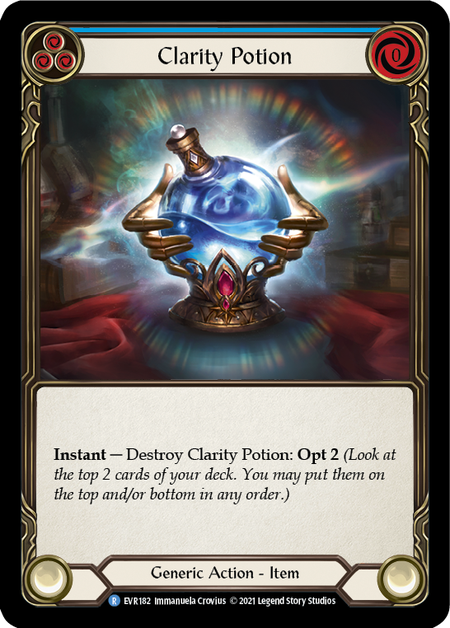

Pro Tip: One huge and under-appreciated change that Everfest has allowed is the ability to draw your combo cards into hand and still be able to use them. Previously, a combo card in hand was practically dead, as it wasted a slot in hand that could be blue, and could only be played from another card effect or from Storm Striders. However, with the addition of Potion of Déjà Vu and the new popularity of Ragamuffin’s Hat, you now prefer to draw your combo pieces into hand instead of relying on drawing blues and hitting them on the top of the deck. This change seems subtle, but it functionally gives you 4 more chances– 1 for each card you draw into your hand– to find your combo piece when you need it.
The third major plan when you’re playing towards a Wildfire you don’t have is to take all the setup steps that I just described, but apply them to a card you really want to combo with Wildfire. Your best candidate for this is Lesson in Lava, with the intention to play Wildfire into Lesson, searching Blazing Aether. You’d be surprised how easy it is to pull off the 2-card combo I mentioned earlier when you have a Lesson set up in arsenal. Next best is Blazing Aether itself, as Wildfire into almost any damaging card in your deck into Blazing has the same damage output. Other great options are Sonic Boom, Chain Lightning, and Snapback- all of which widen out your turns and maximise the value of Wildfire- and honorable mentions to Forked Lightning and Stir the Aetherwinds.
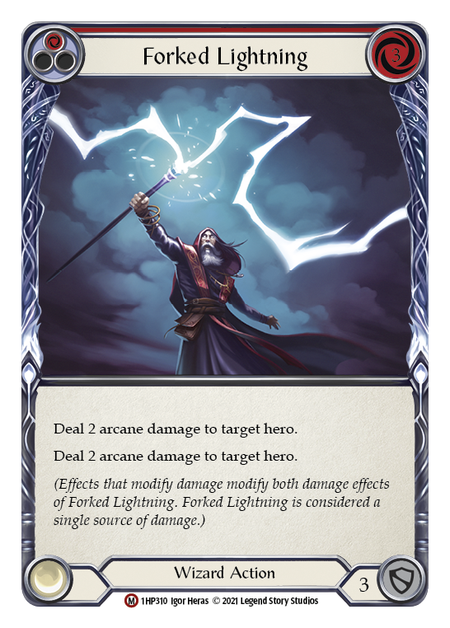
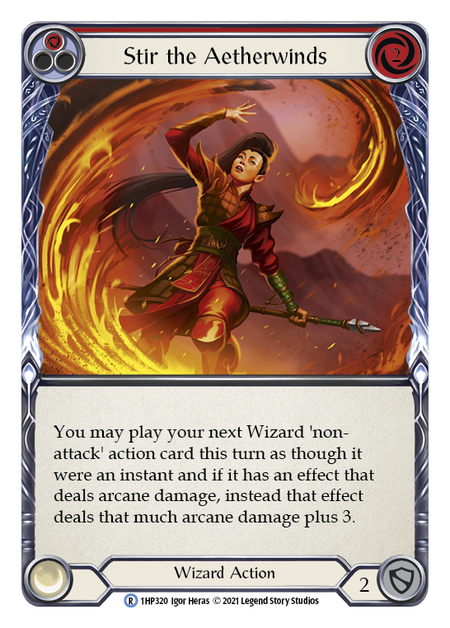
Initially, these plans might seem flawed into certain matchups, particularly the slower decks such as Guardians. But Bravo, Star of the Show is most commonly seen as a bully deck with very fragile hands, so the aggro plan with Wildfire ticking in the back of your mind does perfectly well once you've included some cards for survivability. Only into fatigue matchups- such as the odd Oldhim- does the plan change considerably to be a pitch-stacked OTK- but that’s a skill entirely on its own that I won’t cover today.
It’s a lot to keep track of, but your plan as Kano boils down to just the two things. Number one: deal damage and kill your opponent. Wildfire is not at all necessary for this. Number two: think about Wildfire even if you do not have it; your future self will thank you.
Combo Lines
Before we get into the matchups and meta examination, let's indulge the absurd potential of Kano's combos. These are just a fraction of the combos that are possible – it just goes to show how incredible the versatility of a card like Aether Wildfire can be, and how much utility you can add to your belt with a little bit of Déjà Vu.
The Hot Stuff
We'll start with the combo we emphasized above- your most consistent, high-end kill combo. Have any combination of Aether Wildfire, Lesson in Lava, 2 ways to play cards at instant speed, and 6-9 resources.
Play Wildfire during your opponent’s turn, optionally buffed with Crucible of Aetherweave or Metacarpus Nodes, then play Lesson in Lava, searching Blazing Aether to put on top. Use Kano to banish and play Blazing Aether. Lesson can be any other damaging card if you have the Blazing naturally.
Damage: 25-39
The Free Stuff
Have Potion of Déjà Vu on the board and be wearing Ragamuffin’s Hat with a Tome of Aetherwind and 3 blues in hand.
Pitch to activate Kano twice, then pitch for Kano a third time, holding priority to use Potion of Déjà Vu and put 3 blues on top of your deck. Then activate Ragamuffin’s Hat to draw a card and put Tome on the top of your deck. Resolve Kano and use Tome to draw 2.
You have now generated 2 free activations of Kano and have 3 blues left in hand.
The Blitz Special
Have Stir the Aetherwinds, Aether Wildfire, Forked Lightning, 2 ways to play cards at instant speed, and 7-10 resources.
Play Stir the Aetherwinds as an instant during your opponent’s turn and use it to play Aether Wildfire, optionally buffing with Crucible or Metacarpus. Play Forked Lightning as an instant, receiving the Wildfire buff twice.
Damage: 23-31
The Volcanomancy
The Kano classic kill combo. Have Lesson in Lava in arsenal, Fyendal's Spring Tunic on 3 counters, and 4 blues in hand.
Use Tunic to pay for Storm Striders, playing Lesson in Lava, searching Lesson in Lava, searching Lesson in Lava, searching Blazing Aether. The addition of an Energy Potion allows for a Crucible and Metacarpus activation.
Damage: 18-22, but only works when the first Lesson in Lava hits.
The Cheeky Chappy
Have Potion of Déjà Vu in play and Scour in hand against a Viserai.
Viserai activates Bloodsheath Skeleta. In response, pitch Scour for Kano and hold priority to activate Potion of Déjà Vu, putting Scour on top and banishing it. Play Scour with your remaining resources in hand, destroying your opponent’s Runechants, removing their discounts, and ruining their day.
Damage: Incalculable to their pride.
The Justin Graham
Have 4 blues in hand on turn 0 against an opponent with no Arcane Barrier.
Activate Kano, finding Tome of Aetherwind and drawing 2 more blues. Activate Kano 3 times finding Aether Wildfire, Forked Lightning, and Blazing Aether. Kill your opponent before your first turn.
Damage: 43
The Art of War
Through my experiences playing in ProQuest events this season as Kano, I’ve developed a deck that embodies everything that Kano in Everfest can achieve in a single set of 80 cards: massive damage to punish unprepared opponents, setting up OTKs by turn 3 or earlier with Wildfire, and building to a total OTK with survivability tools and a pitch stack if necessary.
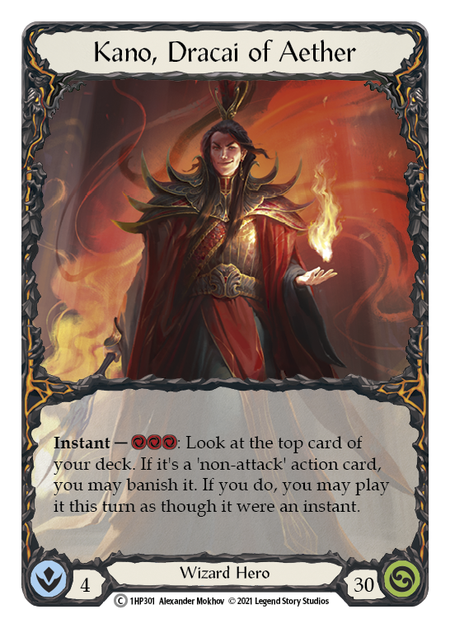
Weapons
- Crucible of Aetherweave (1)
Equipment
- Arcanite Skullcap (1)
- Ragamuffin's Hat (1)
- Fyendal's Spring Tunic (1)
- Storm Striders (1)
- Metacarpus Node (1)
Loadout
- Aether Flare (Red) (3)
- Aether Flare (Blue) (3)
- Aether Spindle (Red) (3)
- Aether Wildfire (Red) (3)
- Blazing Aether (Red) (3)
- Energy Potion (Blue) (3)
- Chain Lightning (Yellow) (3)
- Clarity Potion (Blue) (1)
- Enchanting Melody (Red) (2)
- Gaze the Ages (Blue) (3)
- Forked Lightning (Red) (2)
- Emeritus Scolding (Blue) (3)
- Nourishing Emptiness (Red) (1)
- Eye of Ophidia (Blue) (1)
- Snapback (Red) (3)
- Lesson in Lava (Yellow) (3)
- Reverberate (Blue) (3)
- Scour (Blue) (3)
- Snapback (Blue) (2)
- Stir the Aetherwinds (Red) (3)
- Sonic Boom (Yellow) (3)
- Tome of Aetherwind (Red) (3)
- Unmovable (Red) (3)
- Tome of Fyendal (Yellow) (3)
- Scalding Rain (Blue) (3)
- Voltic Bolt (Red) (2)
- Zap (Blue) (3)
The deck is extremely versatile, with a super-lean core of 46 cards, leaving you with 14 cards of sideboarding to work with – plenty to completely pivot the direction of your deck with.
The sideboarding in this deck can go in 3 directions: full-tilt aggression, control/combo, or midrange duelist. Depending on your local meta, you’ll find yourself using some more than others. Heroes like Runeblades, Ninjas, and Warriors are your key targets for the aggressive sideboard. When you run into an Oldhim- or a Starvo you know to be a bit more defensive- slow yourself down so you don’t die to their dominates while giving yourself time to set up a combo. Lastly, into midrange decks like the Brutes or certain builds of Lexi, playing the aggro package a little more conservatively does a lot of work.
Pro Tip: The very first thing to remember about sideboarding Kano is to never go over 60 cards. In every matchup, you’re looking for specific combo pieces to reach lethal, and the more you dilute your deck the less likely you are to see them in time. Be lean, be mean.
The first step into any matchup is to add 3 blues to get to 28, which I found to be the sweet spot of resources. This can be done by adding 3x Scour into aura decks like Runeblades or Prism, or by adding 2x Snapback and 1x Clarity Potion into others.
When you find yourself sitting across from an aggro deck, the best plan is to out-aggro them back. Race them with Aether Flare, Chain Lightning, Snapback, and your choice of the remaining options to fill in the last 2. Play Nourishing Emptiness if your opponent can’t or hates blocking with armor; Stir the Aetherwinds if you suspect they might run some higher Arcane Barrier; or Voltic Bolt if you just want a bit more honest damage.
Even with an extremely precise game plan, this deck still finds room for micro-adjustments. If you find yourself almost exclusively using these cards, you can adjust the deck by adding red Reverberates or Scalding Rain in place of some of the slower cards to really drive the aggro point home.
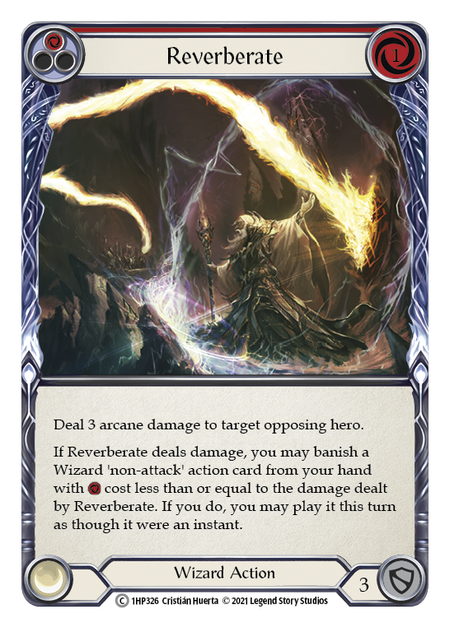
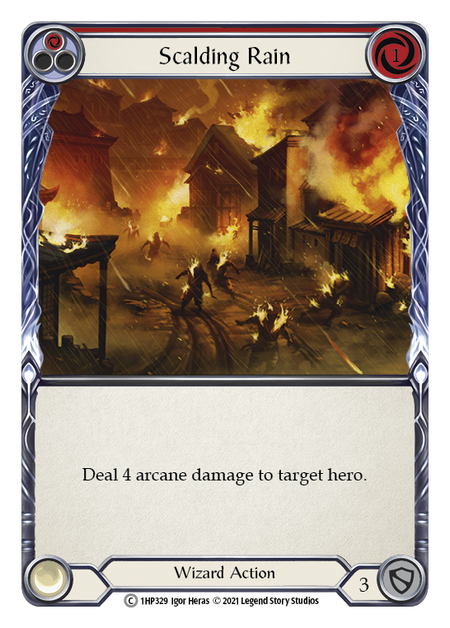
If you want to still be the aggressor, but are facing down a midrange bully deck that runs 3 Arcane Barrier- such as the Brutes or some Starvo builds- there are two main ways to sideboard. The first is taking the full aggro list and using Voltic Bolt in your last 2 slots, such that you can block with 2 cards and play Voltic bolt and Crucible of Aetherweave off of a single blue in the mid-game just as you would with Aether Spindle or Sonic Boom.
The second, more conservative approach, is to remove one each of Snapback, Aether Flare, and Chain Lightning to bring in 3 Stir the Aetherwinds on top of Voltic Bolt, giving you that extra reach over standard 3 Arcane Barrier blocks. If you run into this type of deck a lot, consider changing some of the faster cards for Scalding Rain (to use in conjunction with Lesson in Lava with 2 blues) and Cindering Foresight (to more consistently find the damage to get through your opponent’s blocks).
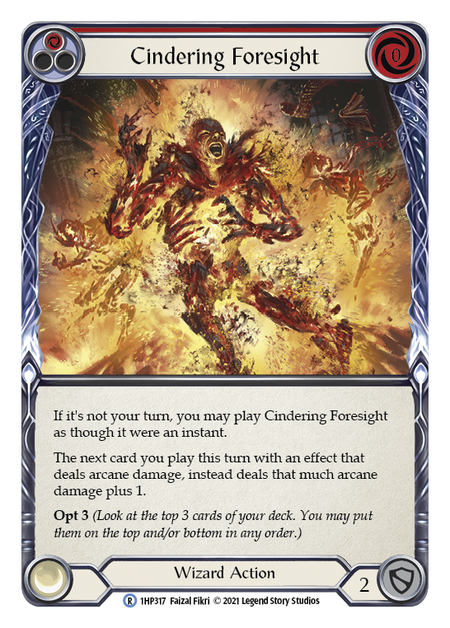
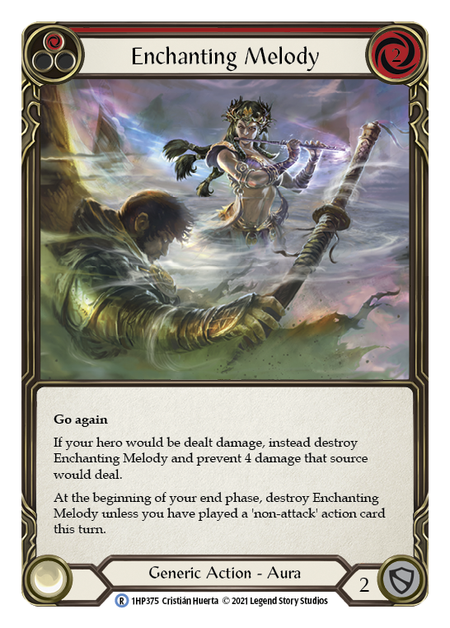
Finally, the hardest archetype to face as Kano: control. While this is practically non-existent against Kano in the current meta, you will still sometimes need to play for a pure OTK in order to win the game. In these types of games your defensive cards like Enchanting Melody and Unmovable will come in, as well as your big combo pieces: Stir the Aetherwinds and Forked Lightning. Remember to assess whether your opponent can block a Nourishing- some Starvo builds can’t- and if you’re going to need Clarity Potion to help fix a pitch stack against an Oaken Old, but otherwise the strategy for winning is too complex for me to go into here. If a large amount of your meta plays like this, there are a huge variety of possible solutions, including but not limited to attack actions like Firebreathing- which allows you to bluff damage and sneak some arcane in if your opponent overblocks- and a suite of defense reactions that can help you build your pitch stack.
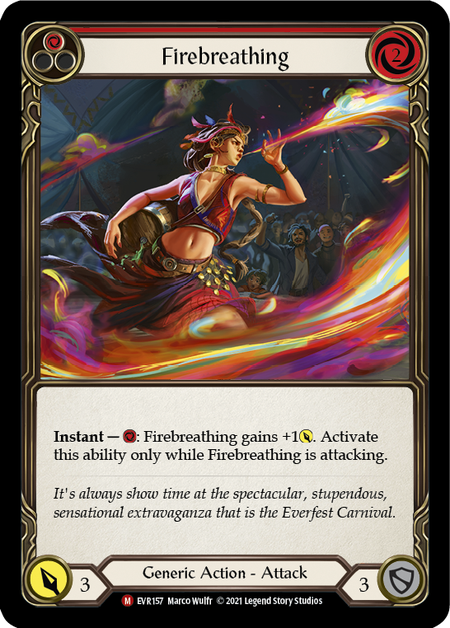
The Fire Nation
With all I’ve said about the phenomenal power of Kano, it begs the question as to why he isn’t destroying events in the top tiers of play. Ignoring the well-known skill ceiling of Kano, the answer to that boils down to the meta.
The Everfest meta is largely set in stone now after both ProQuest season and The Calling Indianapolis, with the Big Three decks- Bravo, Star of the Show, Prism, and Viserai- all very much deserving of their spots. Both Bravo and Prism are extremely challenging matchups for Kano, with most builds of Bravo being very aggressive with very high Arcane Barrier and Crown of Seeds all at once; and with Kano’s complete inability to handle Prism’s auras and heralds with no attacks to his name.
By no means are these matchups unwinnable, but having both of the most represented decks being unfavored matchups while being almost universally favored into the rest of the field is a cruel twist of the knife for the loyal CC Kano players who want nothing more than to see the hero finally accrue some worldwide respect.
Nevertheless, uphill battles are no new concepts for us. Kano has endured unwinnable meta after unwinnable meta, waiting until his moment and the right nudging from LSS to break into the mainstream. Aether Wildfire was a massive step in the right direction, and with just a few subtle changes to the meta, Kano could easily be the dark horse pick that steps up onto the main stage and sweeps the competitive scene off its feet. After all, it has always been my philosophy in Flesh and Blood that no deck should ever go underestimated- even the most unassuming- and I know it is only a matter of time until Kano gets the recognition he deserves.
Audio narration by Mark Chamberlain | Background music by Wavecont | Music promoted by Chosic.com | Licensed under creative commons Attribution-ShareAlike 4.0 International



